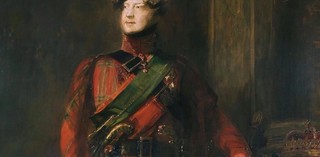Museums and memories

David Wilkie, 1785-1841 / George IV 1829 / Collection: Royal Collection Trust / View full image
Museums are places for complex stories for a diverse public. Everywhere, museums are now far more than just cultural institutions. They have moved politically centre-stage, playing a key role in defining and re-defining national and communal identity.
On International Museums Day, Neil MacGregor while in Australia, shared his wisdom with us. He’s a writer and broadcaster, formerly led London’s National Gallery and the British Museum and founding Director of Berlin’s Humboldt Forum.
In this lecture, MacGregor examines the ways in which museums around the world are attempting to exhibit the past we need to take hold of, in order to confront the future with confidence. Why has this happened?
Listen to Neil MacGregor answer this question
SUBSCRIBE to QAGOMA YouTube to be the first to go behind-the-scenes at events and exhibitions
Stay Connected: Subscribe to QAGOMA Blog
Neil MacGregor began his career as a lecturer in the History of Art and Architecture at the University of Reading in 1975, having studied art history at the Courtauld Institute of Art in London. He was editor of the Burlington Magazine from 1981 until 1987. Then, as Director of the National Gallery, London from 1987 to 2002, he oversaw the opening of the Sainsbury Wing and a complete rehang of the collection. MacGregor raised the profile of the organisation and became a household name in 2000 when he presented the BBC series with the same title as his exhibition ‘Seeing Salvation’, which examined images of Christ in Western Art. In 2002, MacGregor became Director of the British Museum until 2015. He was then Chair of the Steering Committee of the Humboldt Forum in Berlin from 2015 to 2018, unifying five independent institutions under its umbrella..
His books, each accompanied by a series of programmes on BBC Radio 4, include A History of the World in 100 Objects, Shakespeare’s Restless World and Germany: Memories of a Nation.
In 2010, he was made a member of the Order of Merit, the UK’s highest civil honour. In 2015 he was awarded the Goethe Medal and the German National Prize. In 2018 the radio series ‘Living with the Gods’ received the Sandford Saint Martin Award for Religious Broadcasting.
This lecture was presented by QAGOMA in celebration of International Museum Day and supported by the Australian Museums and Galleries Association and the Gordon Darling Foundation.
Feature image: David Wilkie, 1785-1841 / George IV 1829 / Collection: Royal Collection Trust
#NeilMacGregor #QAGOMA

